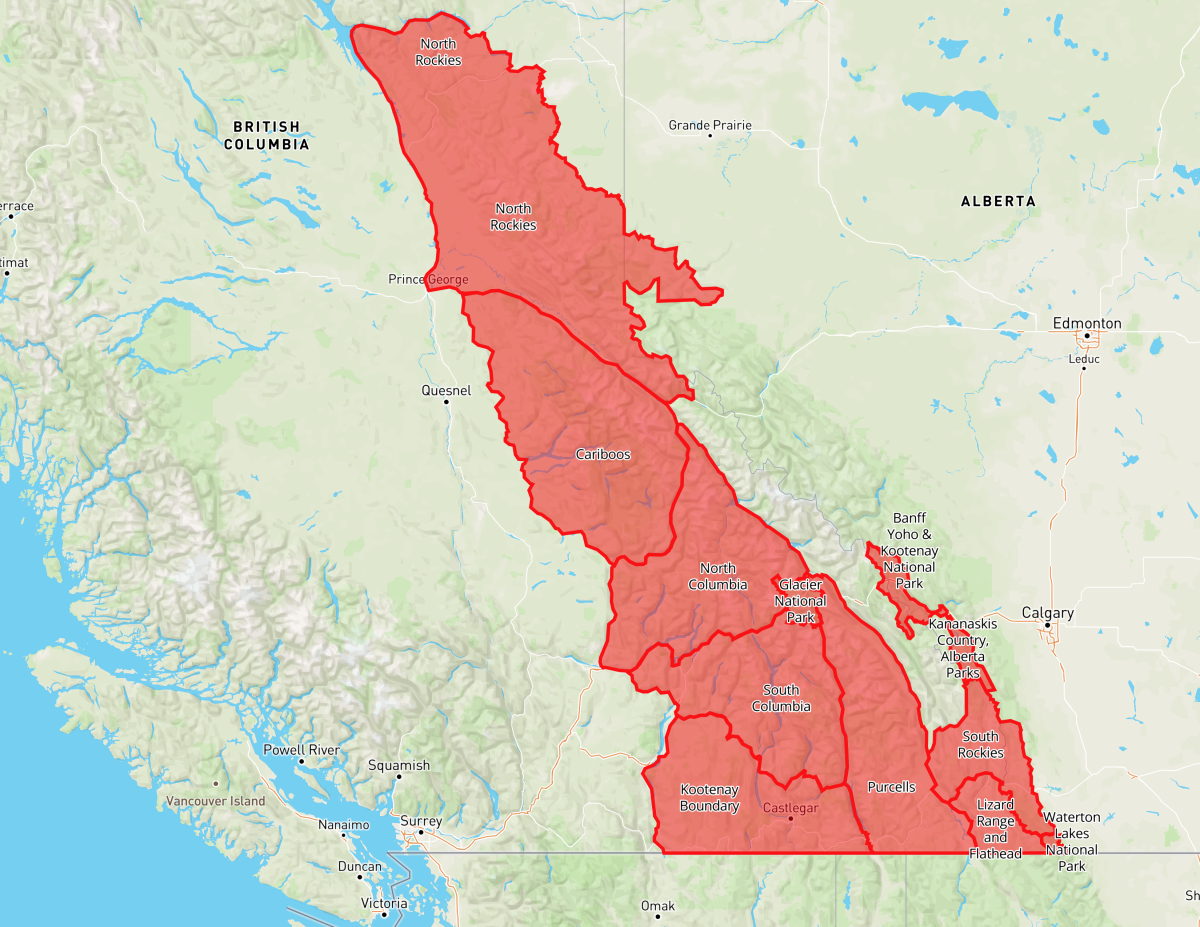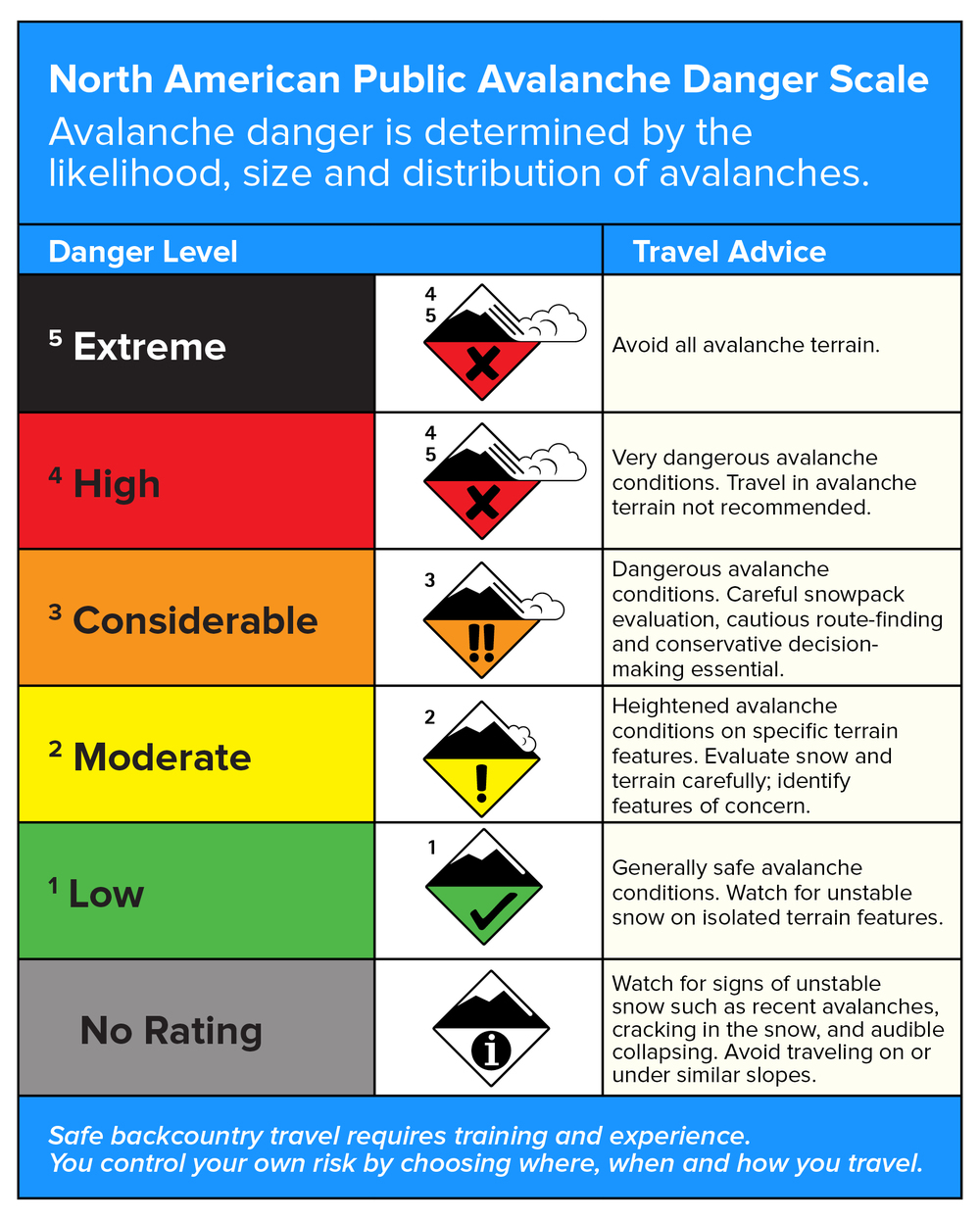An avalanche warning was issued Wednesday for much of eastern British Columbia and the mountain parks in southwestern Alberta, heading into a Christmas weekend that’s expected to be warmer than usual.

Avalanche Canada, in partnership with Parks Canada and Alberta’s Kananaskis Country, issued a special public avalanche warning for recreational users of backcountry and front country avalanche terrain, in effect immediately until Sunday, Dec. 27. (Full list of locations below).
“What we’re concerned about is that avalanches could be easily triggered in the mountains because of the presence of a critical weak layer,” Avalanche Canada forecasting program supervisor James Floyer said.
The snowpack includes a weak layer about 60 to 100 centimetres below the snow surface. Recent snowstorms in Western Canada have added enough snow on top to create a tipping point where large avalanches can be easily triggered by people on snowshoes, skis or snowmobiles.
“That’s, unfortunately, shallow enough to be easily triggered but it’s deep enough to give us some quite large, potentially destructive avalanches.”
Floyer said there’s concern the hazard could be fairly easily overlooked because nice weather this weekend is expected to lure more people outdoors.
He said even though conditions might seem nice, dangerous avalanche conditions remain.
“In reality, we’ve got a persistent weak layer that’s kind of lurking in the snowpack — like a landmine — and the kind of terrain that’s most likely to react to this problem is steeper terrain,” Floyer said.
“There is a serious potential for large, human-triggered avalanches at this time.”
Avalanche Canada said outdoor enthusiasts — including those going outside ski area boundaries — should avoid the steeper terrain in favour of lower-angle slopes and densely forested areas that provide more cover.
Floyer said national parks have been included in the warning because Parks Canada is concerned people who may not be used to travelling in the backcountry in the winter might not be aware of the avalanche risk along some of the popular summer trails.
“If you are not certain about things then, you know, maybe consider staying to really flat terrain, or consider hiring a guide or getting some more information to make sure that you stay safe during this time.
“We know sunny weather can give people a false sense of security when they venture into the backcountry,” added Floyer. “This is not the time to let your guard down.
“Steep open slopes will look tempting but are best left alone for now.”
With indoor gatherings restricted by the COVID-19 pandemic, Floyer said there’s been an increased interest in the backcountry among all ranges of use, including newcomers.
“We do urge people to make sure they have the experience and the training they need to ultimately match terrain to the conditions,” he said, adding those who are not experienced are encouraged to sign up for an avalanche course.
“Be careful, be cautious and don’t jump into something too fast too quickly,” Floyer said.
The warning is widespread and applies to the following forecast regions:
- Kootenay-Boundary
- South Columbia
- North Columbia
- Purcells
- Cariboos
- North Rockies
- South Rockies
- Lizard Range-Flathead
- Banff National Park
- Yoho National Park
- Glacier National Park
- Waterton Lakes National Park
- Kananaskis Country
Of note, Jasper National Park is not included in the warning.
The warning will remain in effect until Sunday, at which time it’ll be re-evaluated. Avalanche Canada will be posting daily forecasts on its website, which it encourages all people to check before heading to the mountains.
The organization recommends travelling in pairs or groups and with rescue equipment, as well as an avalanche rescue beacon. Avalanche Canada‘s list of essential gear includes an avalanche transceiver, 320 centimetre-long probe, shovel and a transceiver interference.
If heading into the backcountry, it also recommends carrying avalanche airbag packs and, because cell service may not be available, an emergency communication device like a satellite messenger or satellite phone.
To stay updated with radar and weather alerts in your area, download the Global News Skytracker weather app for iPhone, iPad or Android.
— With files from Tiffany Lizee, Global News
- Honda expected to announce Ontario EV battery plant, part of a $15B investment
- Trudeau says ‘good luck’ to Saskatchewan premier in carbon price spat
- Canadians more likely to eat food past best-before date. What are the risks?
- Hundreds mourn 16-year-old Halifax homicide victim: ‘The youth are feeling it’






Comments